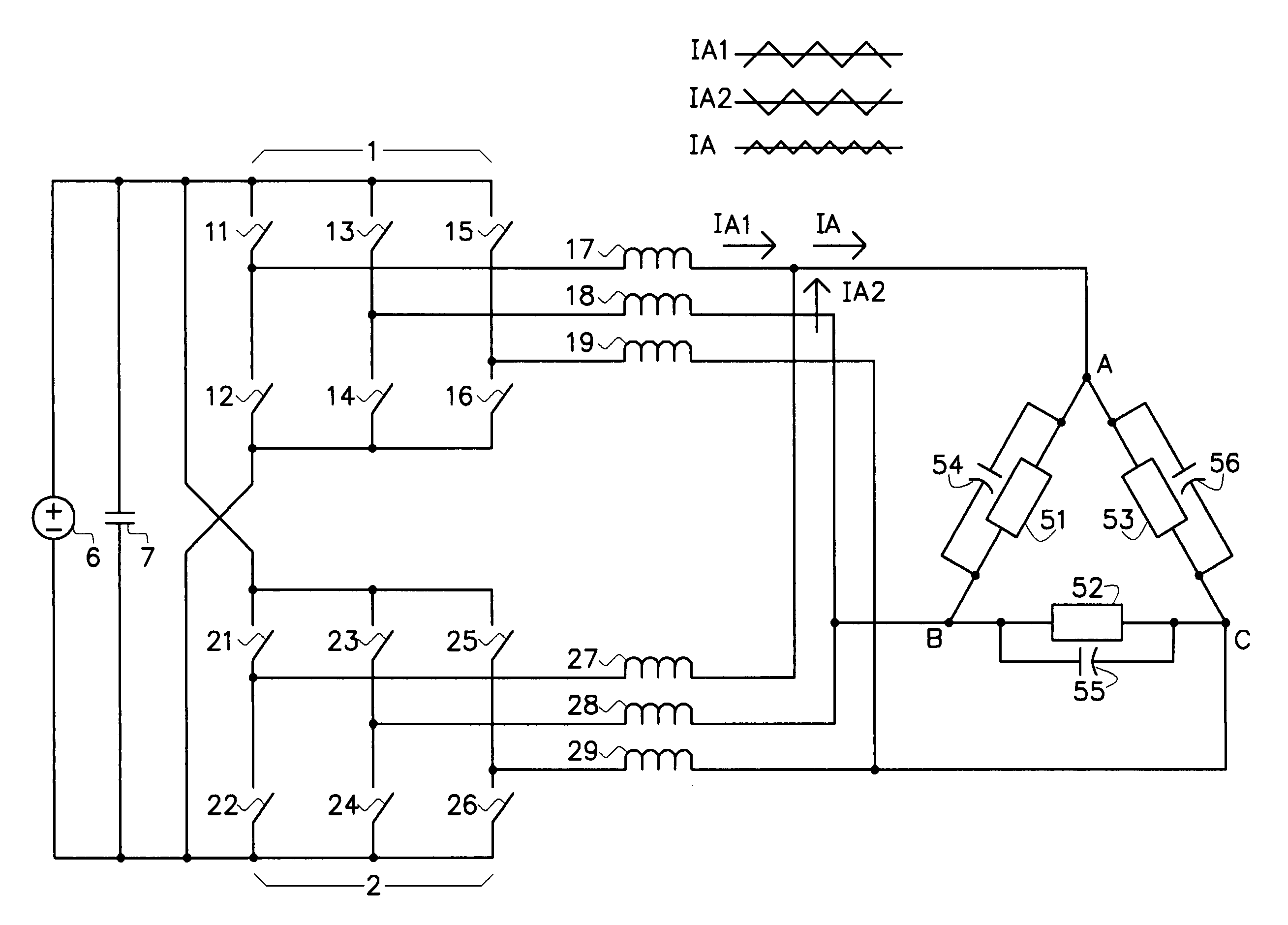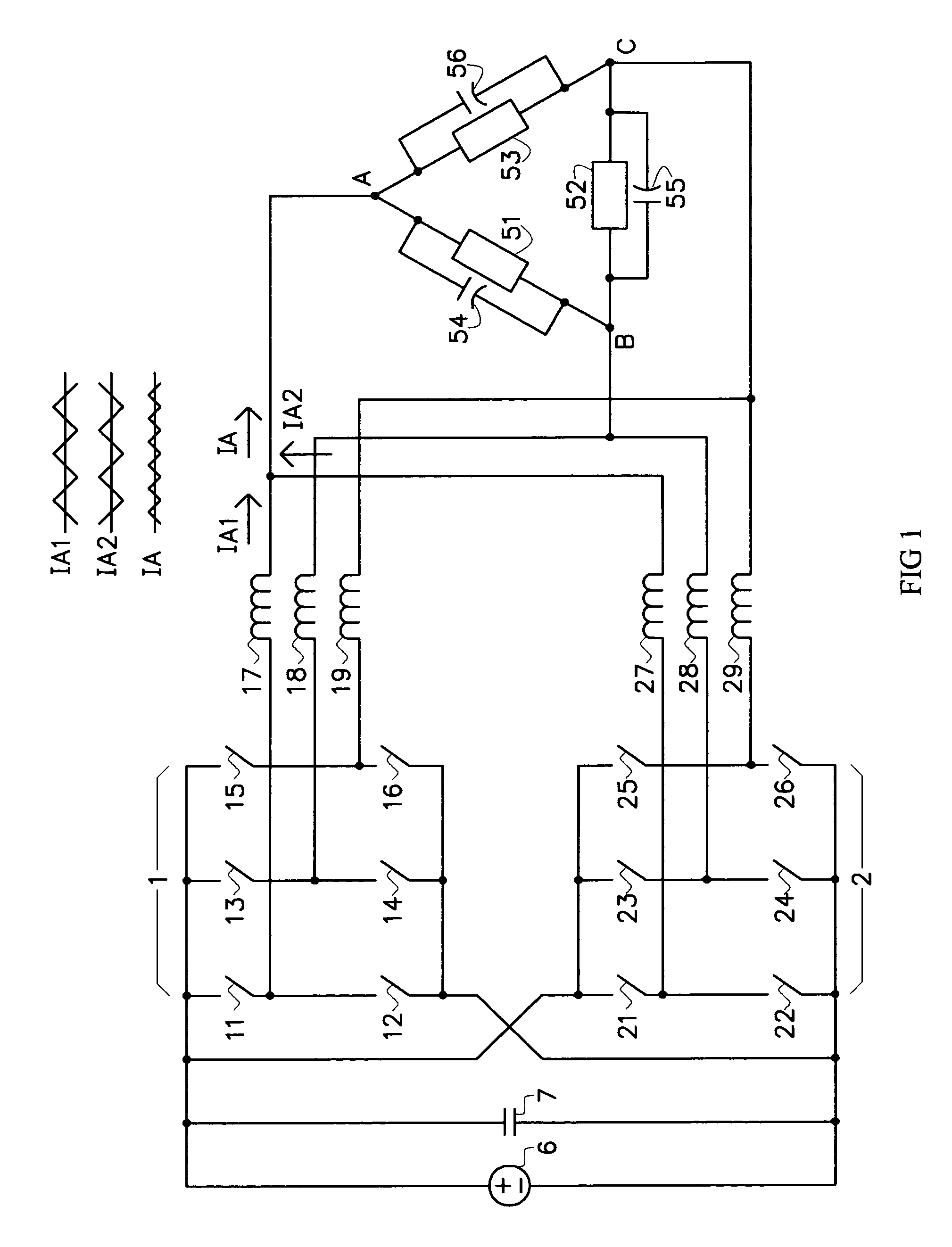Power converter with ripple current cancellation using skewed switching techniques
a technology of ripple current and power converter, applied in the direction of dc-ac conversion without reversal, power conversion system, electrical apparatus, etc., can solve the problems of inverter conversion efficiency, performance parameter, maximum switching frequency, etc., to achieve optimum ripple current cancellation, performance advantages increase, cost, weight and volume of inductive and capacitive filter components are substantially reduced
- Summary
- Abstract
- Description
- Claims
- Application Information
AI Technical Summary
Benefits of technology
Problems solved by technology
Method used
Image
Examples
Embodiment Construction
[0008]The following discussion illustrates the preferred embodiment of the invention. FIG. 1 shows two typical, three-phase bridge circuits, 1 and 2, connected to a common DC source, 6. The high frequency switching elements 11–16 and 21–26 are typically Insulated Gate Bipolar Transistors (IGBTs) with anti-parallel diodes. Bridges 1 and 2 are operated to convert DC power to three-phase AC current delivered to AC utility lines A, B and C. Inductors 17–19 and 27–29 filter the PWM switching waveforms from the two bridges. Capacitors 54–56 provide a second filter pole and operate in conjunction with filter inductors 17–19 and 27–29. The common points A, B and C of capacitors 54–56 are the summing nodes for the individual inductor currents. 51, 52 and 53, for this discussion, are the “primary” windings of a distribution transformer where the “secondary” is connected to the utility grid.
[0009]In this application, a prior art control circuit commands switches 11–16 and 21–26 in each bridge ...
PUM
 Login to View More
Login to View More Abstract
Description
Claims
Application Information
 Login to View More
Login to View More - R&D
- Intellectual Property
- Life Sciences
- Materials
- Tech Scout
- Unparalleled Data Quality
- Higher Quality Content
- 60% Fewer Hallucinations
Browse by: Latest US Patents, China's latest patents, Technical Efficacy Thesaurus, Application Domain, Technology Topic, Popular Technical Reports.
© 2025 PatSnap. All rights reserved.Legal|Privacy policy|Modern Slavery Act Transparency Statement|Sitemap|About US| Contact US: help@patsnap.com



